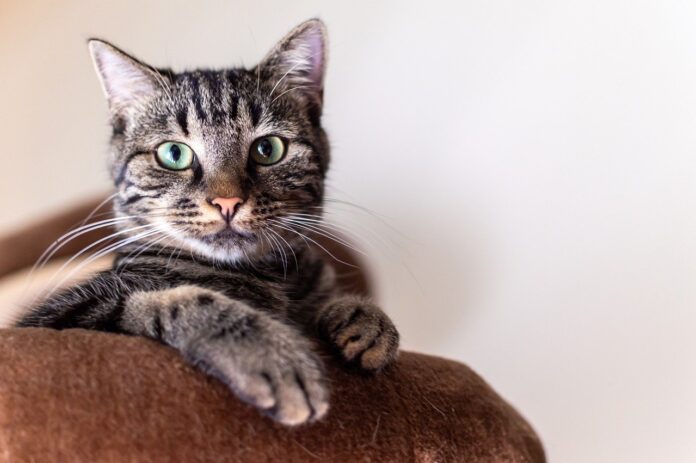Cat owners can name hundreds of reasons to get an adorable fluffy companion. Each cat has its own personality, and sometimes these playful creatures behave just like humans. While it might seem like we know everything about our furry friends, scientists continue to provide new insights. Cats are our best friends, and once you get to know them better, you won’t want to part with them.
Cats Can Heal Diseases
These cuties can alleviate physical and mental ailments. It’s not a myth; in traditional medicine, there’s even a term for this alternative healing method—felinotherapy. Cat owners are less likely to suffer from high blood pressure and recover faster from injuries. Contact with a pet can help with headaches, depression, colds, and joint problems. Touching their soft fur activates specific points on your palms. Just petting a cat can lift your mood. Cats heal with sound (purring at a frequency of 16-44 Hz), warmth, and their special energy.
Cats Sleep for Most of Their Lives
They spend two-thirds of their day sleeping, with the remaining time spent awake. Science has yet to fully explain this phenomenon. It could be related to the behavior of their feline ancestors—predators that hunted alone. Digesting prey took a long time, which they spent resting in silence and peace. Interestingly, cats can dream, and this has been proven experimentally.
Cats Were Domesticated 10,000 Years Ago
In 1936, a kitten’s mummy was found in Cyprus, buried alongside its owner. This incredible find dates back to the 8th millennium BCE. Before this, it was believed that cats were domesticated much later in Ancient Egypt.
Earthquake Predictors
Cats are highly sensitive to vibrations, which allows them to warn of an impending earthquake 10-15 minutes before significant tremors occur. People living in earthquake-prone areas know many cases where pets helped avoid danger.
Living Compasses
Cats are excellent at navigating, and their innate sense of direction helps them find their way home from many kilometers away. This ability is called “psi traveling.” Various hypotheses have been suggested: the animal’s inner ear contains iron, which acts like a natural compass, or cats determine their coordinates by the angle of sunlight. Which theory is correct remains unknown.
Not All Cats Fear Water
The Turkish Van is a fairly large breed that can swim and hunt both in water and on land. Representatives of this ancient breed not only love water but also possess remarkable intelligence. For example, they can easily learn to open faucets and bathroom doors to cool off in hot weather.
There Are 500 Million Domestic Cats in the World
Australia has the highest concentration of cat lovers, with 9 cats for every 10 people. In the United States, every third family owns a furry friend. In China, 53 million cats have loving owners. Cats are also popular in other countries, including Russia, Brazil, France, Italy, Ukraine, and Japan.
Black Cats Are Mystical Creatures
Encountering a black cat can bring either bad luck or good fortune, depending on where you are. In Japan, the UK, and Australia, black cats are considered a good omen, while in North America and Europe, the opposite is true. Sailors believe that a dark-furred cat is a good companion on a voyage, ensuring a safe return. During the Middle Ages, black cats were thought to be witch accomplices and were mercilessly exterminated, which led to a sharp rise in the rat population—the carriers of the bubonic plague.
Record-Breaking Cats
Some cats have survived falls from great heights with almost no injuries. Cats have the ability to group themselves and land on all four paws to soften the impact. A kitten named Sabrina from New York fell from the 32nd floor and only suffered minor bruises. The heaviest cat on record is an Australian cat named Himmy, who weighed 21 kg (46 lbs), while the smallest cat, Tinker Toy from Illinois, weighed only 680 grams (1.5 lbs). The longest-living cat was Lucy from Britain, who was born in 1972 and passed away in 2015, living to the age of 42. She holds a Guinness World Record.
Cat Infantry
Cats have a better sense of smell than dogs. During World War I, the British army created a special “cat corps,” where these unique soldiers were tasked with detecting toxic gases.
Communication Skills
Cats communicate with each other through hissing or purring, while meowing is mostly reserved for humans. A cat’s vocal cords can produce up to a hundred different tones depending on the emotions they are expressing.
A Cat “Discovered” Iodine
In 1811, chemist Bernard Courtois was conducting experiments with his cat sitting on his shoulders. When there was a sudden knock at the door, the “assistant” jumped down and knocked over two flasks. Sulfuric iron salts mixed with a seaweed tincture, causing a reaction with smoke. This led to the formation of brown crystals, which were later named iodine.
